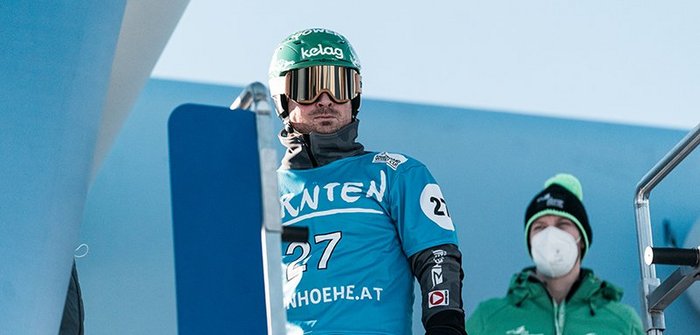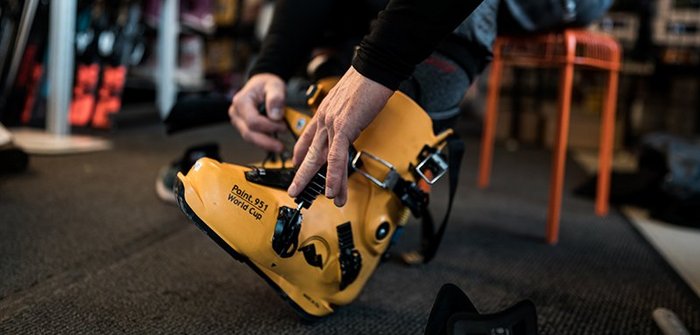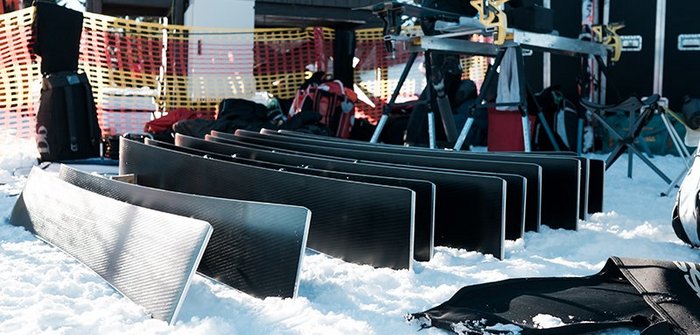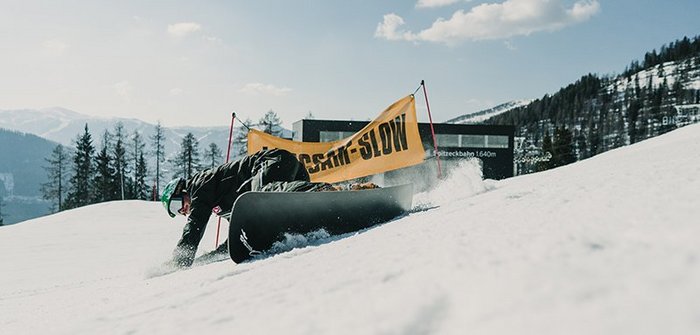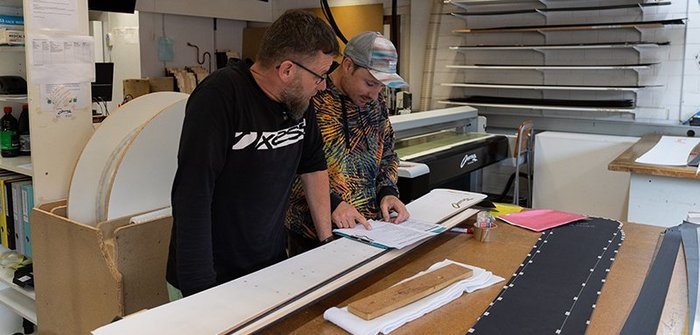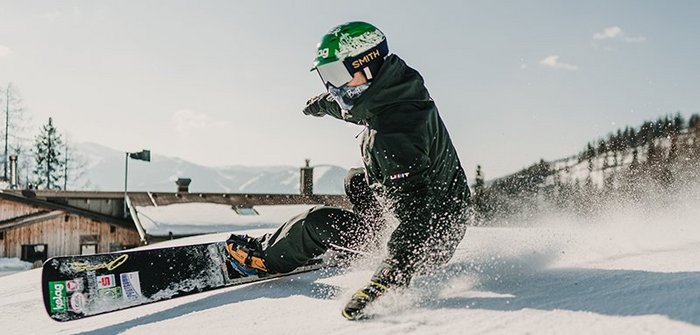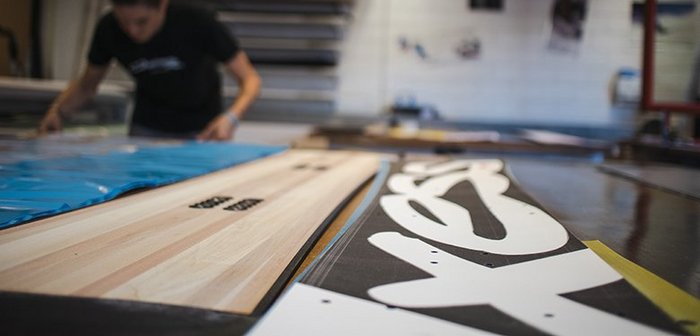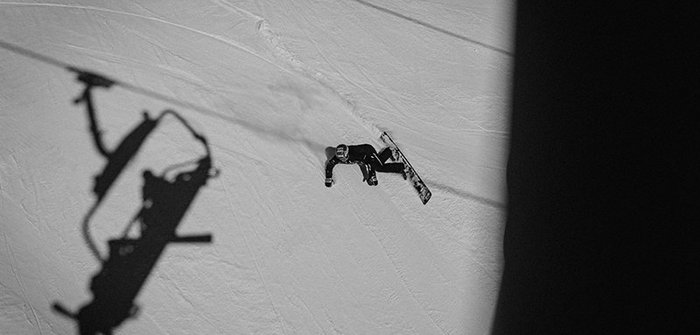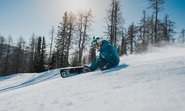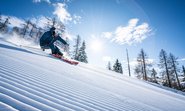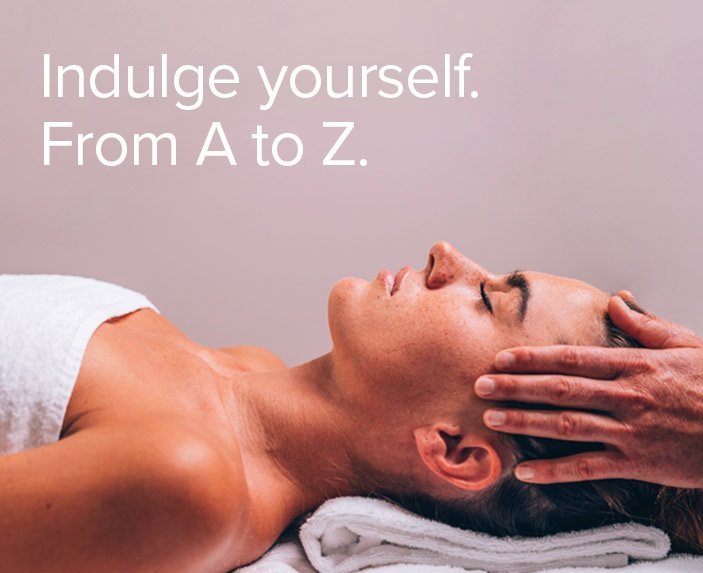Guest-blog: Insider Info. How does the World Cup professional choose his equipment?
Professional snowboarder Alex Payer shares his insider knowledge with us and explains how the professionals set about choosing the perfect equipment for the upcoming ski & snowboard season. He also has bags of helpful tips for recreational athletes when it comes to selecting the right equipment.
The miracle equipment?
As every ambitious winter athlete knows, the right equipment is often key to a perfect ski day; so when a carving turn doesn’t quite go to plan, then it’s got to be the fault of the edge tuning and not the skier themselves. ;-)
All joking aside, personal ability is obviously still the most important factor, but the right equipment does help the snowboarder and skier get the best out of themselves and hit the slopes. So let’s take a look here at just how this tricky subject is approached in the professional sport
First up, the most important question:
When is testing done?
This is the first question you need to think about when dealing with matters of equipment and is especially important to me – because in my opinion, the answer is pretty much the same for both professional and amateur athletes.
- The ideal time to search for the perfect ski is at the end of the season. This is when you’re usually in tip-top condition, you’ve covered a decent distance on the slopes over the winter and as a result built up confidence in your own ability. So you can really test out your options under the best physical conditions and will often notice the subtle differences right away.
- Another important point here is that obviously our most popular slopes are choc-abloc in early winter, which sometimes means there isn’t enough room to feel your way around the new equipment.
- For me, the period after the last World Cup races is so important. So my test phase mostly runs from the end of March to the end of April, by then I have to have the basics down at least, so I can head into the new winter season with total peace of mind.
There are many different opinions when it comes to this question:
Where is testing done?
Answering this question is like running the gauntlet because each winter athlete has their favourite terrain and their favourite slopes especially. But what matters to me is spending my test days on wide, easier slopes.
Simply throwing myself down the “Klammerschuss” with my new equipment without first having built up the necessary confidence on it doesn’t make much sense, does it? That’s why I’d always recommend making your first turns on easier terrain and going for wide slopes like the Spitzeck descent. Because speed aside, the equipment should move playfully in different radii and rhythms.
So my tip is this: always go from easy to difficult, from flat to steep.
Let’s get down to business:
How is testing done?
For me, the “how” is all about just one thing: “good preparation”. Obviously, a professional athlete can’t carry a couple of boards or skis onto the slope and then just set off. There are a few things to bear in mind and sort out first:
1. Preselection.
The boards I really want to take with me on a test run clearly need to be carefully selected because there’s simply no way you test more than 3-4 boards properly at one time. And they have to be matched to your own weight and footwear already as well. I’d do just the same if I were an amateur athlete. I’d recommend organising a maximum of three different types of sports equipment that have caught your interest (rental outlet/sports retailer in the skiing area or ski test days) and have them all adjusted and tuned absolutely identically.
2. Test course.
In racing, I obviously have to use a closed slope with an extended course. The point to note here is that it doesn’t have to be the hardest slope and, most importantly, you should keep an eye on the time. You know, even in 2023, this isn’t always reliable. Hobby athletes can also use the race course with timekeeping in the skiing area Bad Kleinkirchheim – right by the panorama lift / Nockalmbahn mountain station.
It’s also really important that there’s enough room on the test slope – so that you can make a couple of opening turns on the same slope. You can often tell the moment you set off if a board or ski isn’t up to the task.
3. Procedure.
For me, it’s best to put each board through at least 3 timed runs each day. That on top of a few warm-up runs, of course. And here’s a little tip for all the amateur athletes out there: you need a certain amount of time to get used to each new item of sports equipment and it isn’t always love at first sight.
After each test day, I strike one board off the comparison list until, at some point, I’m left with my “race board”. Which is why I recommend not having too many options on your shortlist, otherwise you’ll have a long test phase ;-)
Is there such a thing as the perfect board / ski?
That question has been motivating board and ski manufacturers for decades; it also ensures there’s a constant stream of new products and that innovation doesn’t fall by the wayside. Essentially, what really makes a good board and good skis all comes down to the real wood core.
You could get quality defects here more than anywhere else, but if you get it right, along with other components, you have the makings of something great. If you’re looking for a gentle, quiet ski or snowboard, go for one with a high density of rubber inserts. If you prefer something more aggressive, go for as many titanal layers as possible. Unfortunately, the surface is all about looks and has minimal impact on performance.
And remember, in racing there is absolutely no such thing as the “only” board or “only” ski. Factors such as course layout and slope quality simply play too great a role in the choice of equipment. But for all these factors, I use the same equipment in a good two thirds of all the competitions I enter. I don’t always go for the fastest choice out there, but it’s the equipment I have the most trust in and that offers me the most consistent level of performance
And you can apply the same logic in amateur sport too. It’s not just about finding “the one perfect piece of sports equipment” that offers the best edge grip or the fastest acceleration, but the board or ski that best matches your own performance.
All the best &
have a good start to the winter season!
Alex
Instagram: alexanderpayer
Website: https://www.alex-payer.at/

